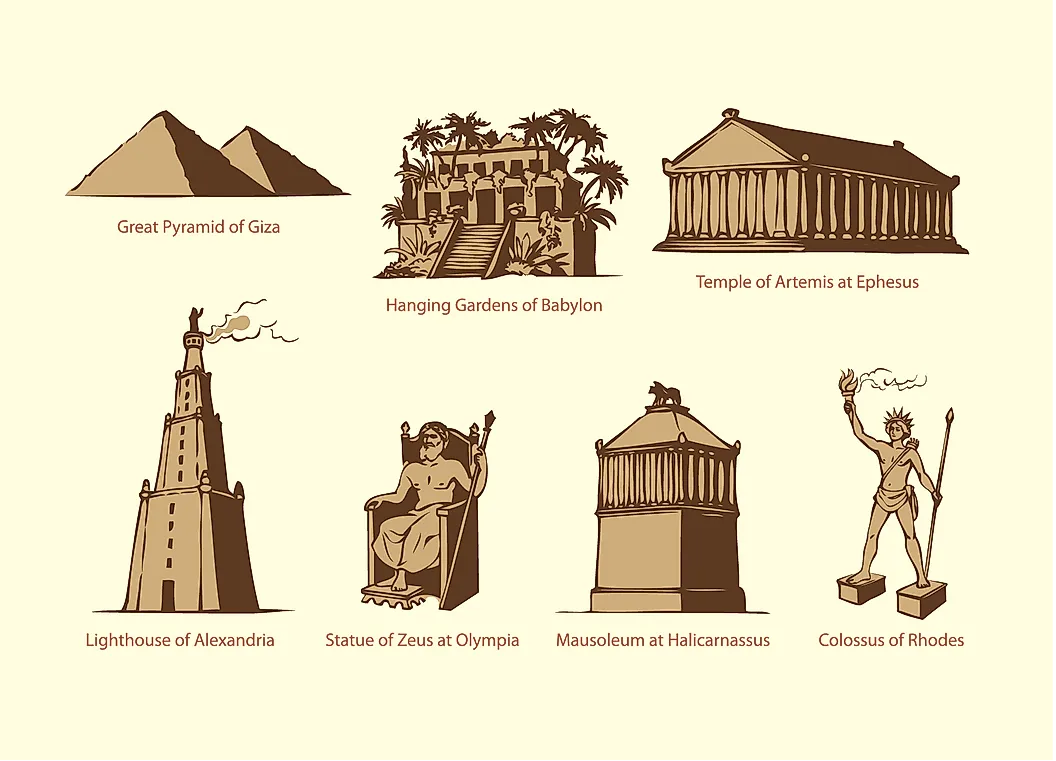The wonders of the ancient world were some of the grandest feats of mankind, achievements that stand as symbols of human ingenuity and perseverance. From the Great Pyramid of Giza in Egypt to the Hanging Gardens of Babylon, each wonder showcased the wealth of a distinct civilization and mastery over its natural environment.
So, what are the wonders of the ancient world? There were seven in total, and today only one still stands. The Colossus at Rhodes, Mausoleum at Halicarnassus, Lighthouse at Alexandria, Zeus’ Temple in Olympia, the Temple of Artemis, the Hanging Gardens of Babylon, and the Great Pyramid of Giza. Each had its own unique design and became an iconic symbol through the ages. These monuments are a testament to the grandiosity of the ancient world and the importance of Classical Antiquity.
So, without further ado, what are the wonders of the ancient world?
Great Pyramid of Giza
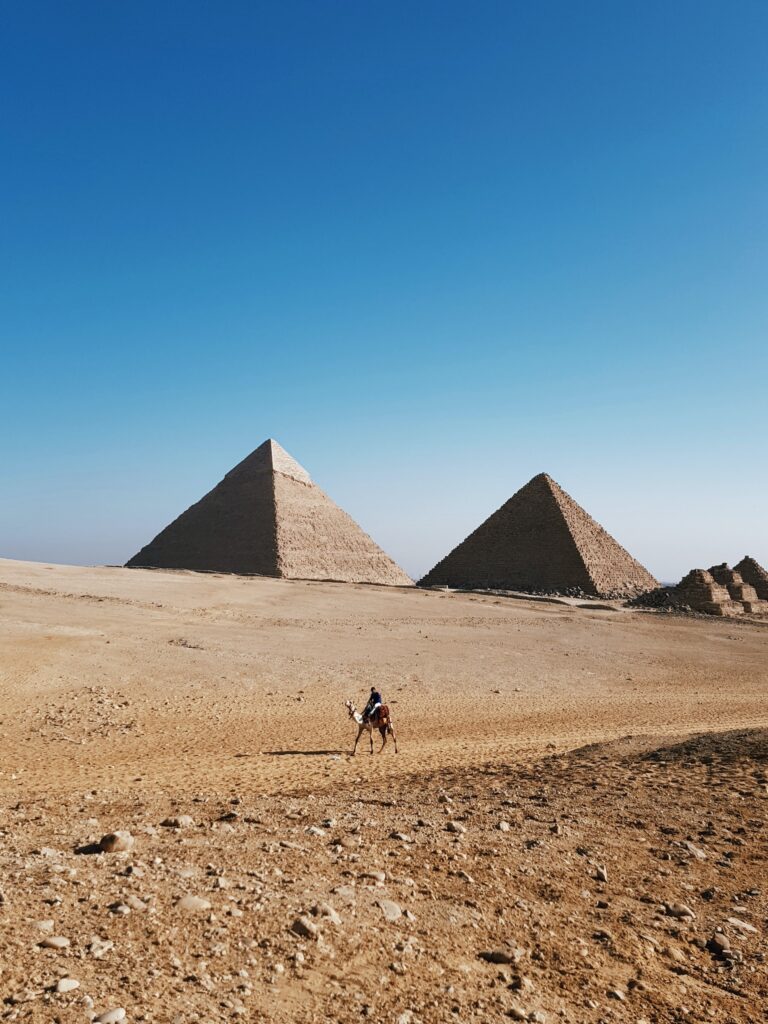
The oldest, and perhaps most important, wonder of the ancient world also happens to be the only one still standing: the Great Pyramid of Giza. Visit Cairo, Egypt’s modern-day capital, and cross the river into ancient Giza. Here you’ll find a massive pyramid complex the likes of which nowhere else in the world can compare.
It’s believed that the Great Pyramid of Giza was built roughly 2,500 years before Christ. To give you some perspective, that means Cleopatra’s lifetime (69 – 30 BC) was closer to the present day than it was to the building of this ancient wonder!
The Great Pyramid of Giza was built as a royal tomb for Pharaoh Khufu to represent his ascension to the afterlife. Standing nearly 481 feet tall, the Great Pyramid was the world’s tallest building until 1311 AD. On top of that, it consists of 2.3 million stone blocks which were fitted together near-perfectly and held together with mortar derived from ashes. Today, millions of visitors continue to flock to this iconic structure each year to marvel at its majesty and learn more about its intriguing history.
Colossus of Rhodes
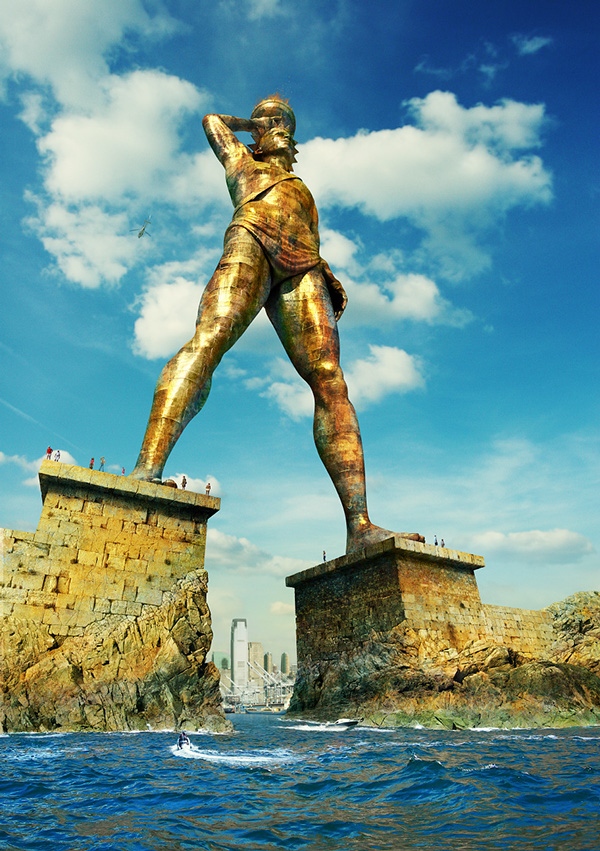
The Colossus of Rhodes was the shortest-lived of the seven wonders of the ancient world. It was constructed during the Hellenistic Period of ancient Greece, between 292 and 280 BC. Standing at about 110 feet high and made entirely of bronze, the Colossus certainly made a bold statement in its time. Its iconic stature has been described by ancient authors as straddling both ends of a harbor, allowing ships to safely pass beneath its legs.
The colossus was fashioned after Helios, the sun god. And its legend has inspired countless famous statues to follow, most notably the Statue of Liberty. Unfortunately, the immense statue was destroyed by an earthquake just 56 years after its initial construction. Despite its destruction, the Colossus stands as a symbol of human strength and ingenuity; memories have been preserved through Greek legends so that even centuries later we can still be amazed by its beauty.
Lighthouse of Alexandria

Built in the 3rd century BC, the Lighthouse of Alexandria, also known as the Pharos of Alexandria, was a remarkable structure and one of the world’s earliest lighthouses. Standing at an impressive height of 350 feet, it was made up of a series of three tiers; each tier was built in rapid succession with limestone blocks and was topped by a crystal-embedded cupola.
The light from this lighthouse reportedly reached over 30 miles away and is said to have been visible from nearby islands throughout the night. The Lighthouse at Alexandria has long since been destroyed, having succumbed to natural disasters, earthquakes and even human negligence, leaving only ruins which have become an iconic symbol of civilization since its demise. It stands as a testament to humankind’s many marvels yet delicate fragility in the face of time.
Mausoleum at Halicarnassus
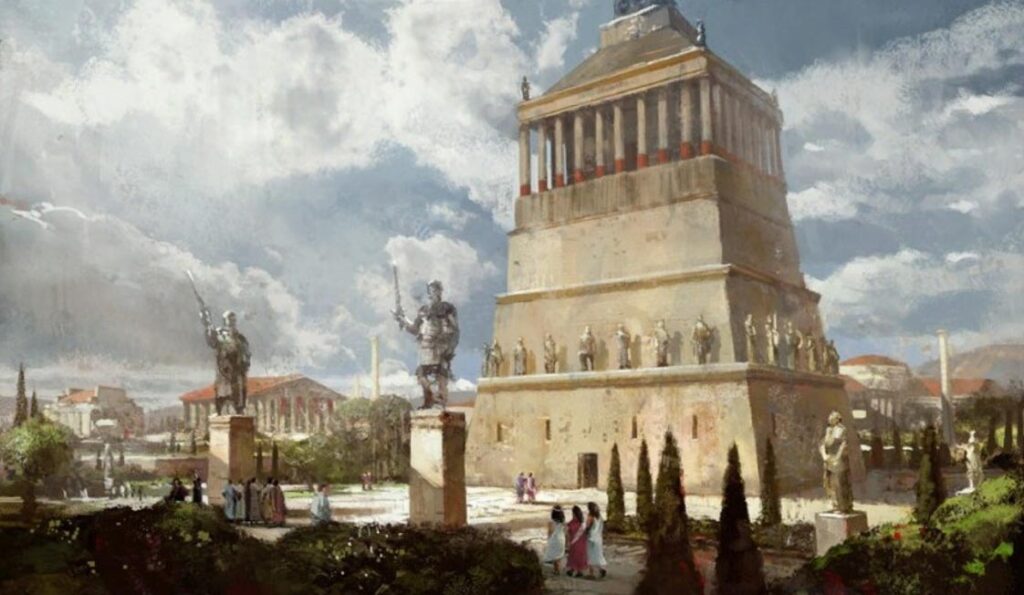
The Mausoleum of Halicarnassus, built in the mid-fourth century BC in Bodrum, Turkey, is one of the most incredible wonders of the ancient world. This large tomb was constructed by the king of Caria, Mausolus, who lends his name to the word mausoleum. The mausoleum was known for its decorated façade featuring statues and columns enriched with relief sculpture. Each of the four stories featured a different type of architectural style and seventy-two Ionian capitals crowned each side. In addition to its unique exterior design, it was also decorated with friezes painted in bright colors and contemporary images. The mausoleum’s size and beauty has enchanted many throughout history, so much so that the word mausoleum has become synonymous with grandiose tombs due to its impressive stature.
Temple of Artemis
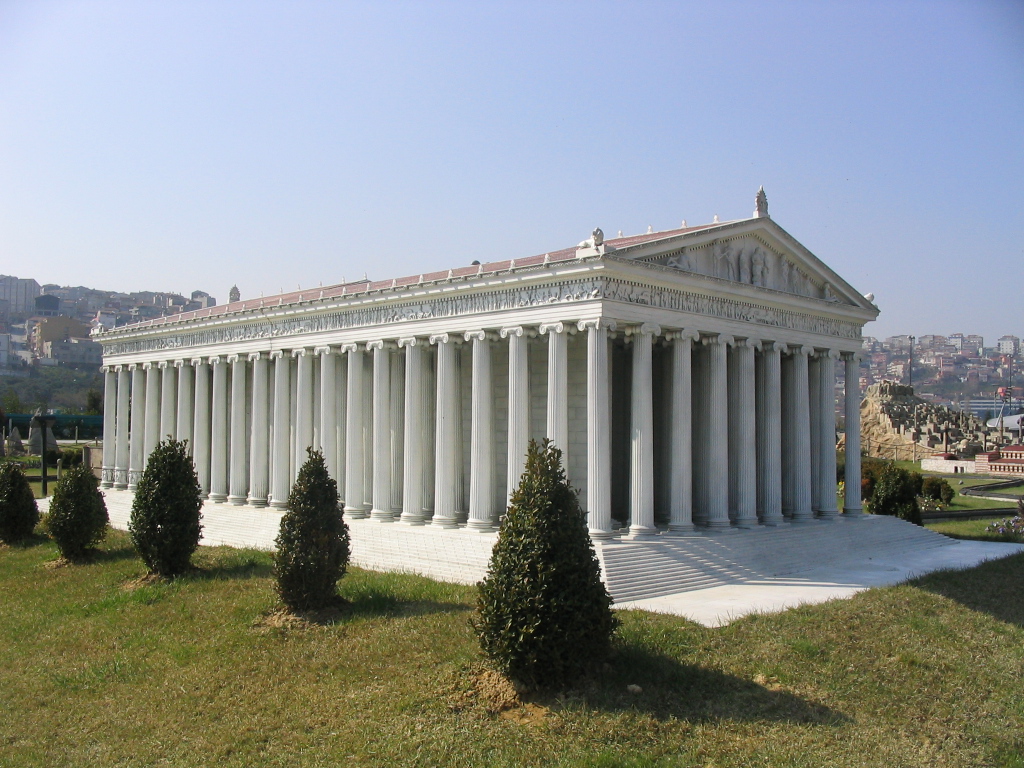
The Temple of Artemis at Ephesus, located in modern-day Turkey, was a temple devoted to Artemis, the ancient Greek goddess of the moon and the hunt. Though it was destroyed and rebuilt multiple times, the temple was eventually abandoned during Late Antiquity due to various disasters such as floods and riots. Archaeological evidence reveals that it was surrounded by many pieces of art including marble sculptures and an ornately decorated altar with an ivory bull-shaped statue. The peripteral temple is believed to have been over 300 feet long and 180 feet wide with 122 columns flanking its sides. Due to its intricate design, it has served as an inspiration for many throughout history and remains a symbol of immense elegance to this day.
Statue of Zeus at Olympia
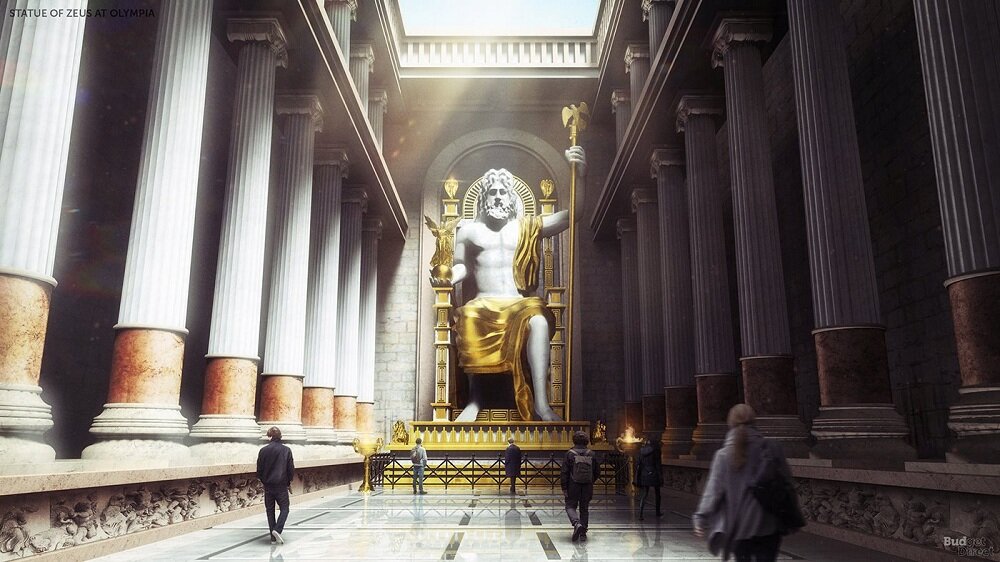
The Statue of Zeus was a stunning ancient sculpture located in the heart of Olympia, Greece that has endured the passage of time. This imposing piece of fine art was commissioned by the Greek king Lyso Lydo in 435 BC to honor the god Zeus. However, no evidence remains from when it was first completed other than accounts from Greek philosopher, traveler and playwright Herostratus which were recorded almost two centuries later. However, it is believed that due to its exquisite features it had golden shields along its arms and an ivory and gold crown surrounding its head.
Hanging Gardens of Babylon

The Hanging Gardens of Babylon were an engineering feat like no other – if they were actually real, that is. It is believed that they were built around 600 BCE in present-day Iraq for King Nebuchadnezzar II. Perhaps most impressive was their tiered structure – arranged on several levels like a ziggurat, soil and water were used to build up from layer to layer. Additionally, many exotic plant species grew in this garden which towered over all neighboring structures. Today though, no physical evidence remains of the Hanging Gardens of Babylon outside the writings by ancient Greek historians. Whether or not they even really existed is a matter for serious debate. Despite this mystery, however, each year thousands admire their fascinating story and have sparked great inspiration for similar engineering feats around the world.
